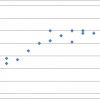The Latest
 |
Understanding Culture and Agile Application Lifecycle Management[article] While the technical complexity of real-world ALM may be substantial, sometimes the people issues present even more complex challenges. Being able to understand the personalities and work culture of the folks doing the work can help you implement ALM in a comprehensive and effective way. |
|
 |
Estimating Business Value in the Shark Tank[article] You can use analytical methods to assign business value to a user story, of course, but another way is simple estimation. Allan Kelly describes an estimation exercise that combines the Scrum tool of planning poker with a TV show format to add some fun. You end up with enlightening conversation and revealed requirements. |
|
 |
Business and Development: Working Together to Build Better Products[article] Business stakeholders and DevOps teams both have to take an active approach to app development, but neither faction should have to change practices and processes in order to get their needs across. Investing the time to establish communication between these teams will drive delivery of the applications customers demand. |
|
|
|
Seven Guidelines for a Great Web API[magazine] Web APIs have opened up a brave new world for app collaboration. James Higginbotham presents a series of guidelines that every programmer should consider in the design and implementation of a great API developer experience. |
|
 |
Strategies for Encouraging and Facilitating Team Feedback Sessions[article] We know the importance of quick feedback cycles in our builds so we can fail fast and get reactions from the end-user. But sometimes agile teams forget the importance of gathering responses from other team members. This article details several methods for eliciting feedback, as well as how to pick what's right for your team. |
|
 |
Plotting Data to Understand Your Agility[article] Many teams think they are agile in their projects, but if you're not receiving and analyzing feedback regularly, you're not really agile. Plotting the feedback you get on a chart throughout your sprints can help you see whether you have a lag. Read on to learn how to gather and use your feedback to be truly agile. |
|
 |
The Fundamentals of Agile: STARWEST 2015 Interview with Jeffery Payne[interview]
Video
In this interview, TechWell speaks with Jeff Payne, the CEO and founder of Coveros. At STARWEST, he gave a two-day course titled "Fundamentals of Agile Certification." |
|
 |
Would Santa Claus Make a Good Product Owner?[article] The elves working on Project Santa—you know, the big delivery that happens every December 24—have decided to go agile. But Santa, the product owner, is busy and not always available to answer questions or provide guidance. What kind of suggestions and improvements should they address in their retrospective? |
|
 |
Building Your Mobile App Quality Strategy: STARWEST 2015 Interview with Jason Arbon[interview]
Video
In this interview, TechWell speaks with the CEO of AppDiff.com, Jason Arbon. During the show, he gave two presentations titled, "Testing the Internet of Things" and "Building Your Mobile App Quality Strategy." |
|
 |
Who Is the Real Product Owner?[article] Communication is always vital on an agile project to ensure everyone is on the same page, but it's perhaps most important in a relationship between a vendor and a customer. Here, Marcus Blankenship relates a personal story about a project where communication failed, and gives some good tips for how to avoid it happening to you. |
|
 |
I Don’t Want to Talk about Bugs: STARWEST 2015 Interview with Janet Gregory[interview]
Video
In this interview, TechWell speaks with agile testing coach and practitioner Janet Gregory. During the STARWEST 2015 conference, she presented the keynote "I Don’t Want to Talk about Bugs: Let’s Change the Conversation." |
|
 |
Use Lean Thinking to Accelerate DevOps Performance for Agile Teams[article] Leaders in agile organizations should consider adding lean techniques to their DevOps practices. Lean thinking can accelerate DevOps delivery by providing a set of processes and principles to help create more beneficial products, save money, boost productivity, reduce waste, and map to value. |
|
 |
When Prioritizing Stories, Don’t Forget the Stakeholders[article] Instead of choosing what to develop based solely on a cold, hard dollar amount, you might try approaching the person who originally requested a story—or who will be most affected by it—and asking, “What benefit will this bring you?” Armed with a list of stakeholders and interests, you can find out the real difference a story will make. |
|
 |
Pair Writing: The Benefits of Working with a Partner[article] For many, pair programming delivers benefits such as increased focus, improved team relationships, and better code. Tom Breur and Michael Mahlberg found that pair writing can work, too, and the advantages bear a lot of resemblance to those of pair programming—more concentration, productive feedback, and better writing. |
|
 |
Book Review: The Agile Mind-Set: Making Agile Processes Work[article] Gil Broza's book The Agile Mind-Set: Making Agile Processes Work speaks to the challenges faced by people who focus on "doing agile" rather than "being agile." Rote execution of methods can only get you so far, and Broza gives insights into how you move beyond practicing agile by habit into living it. |













